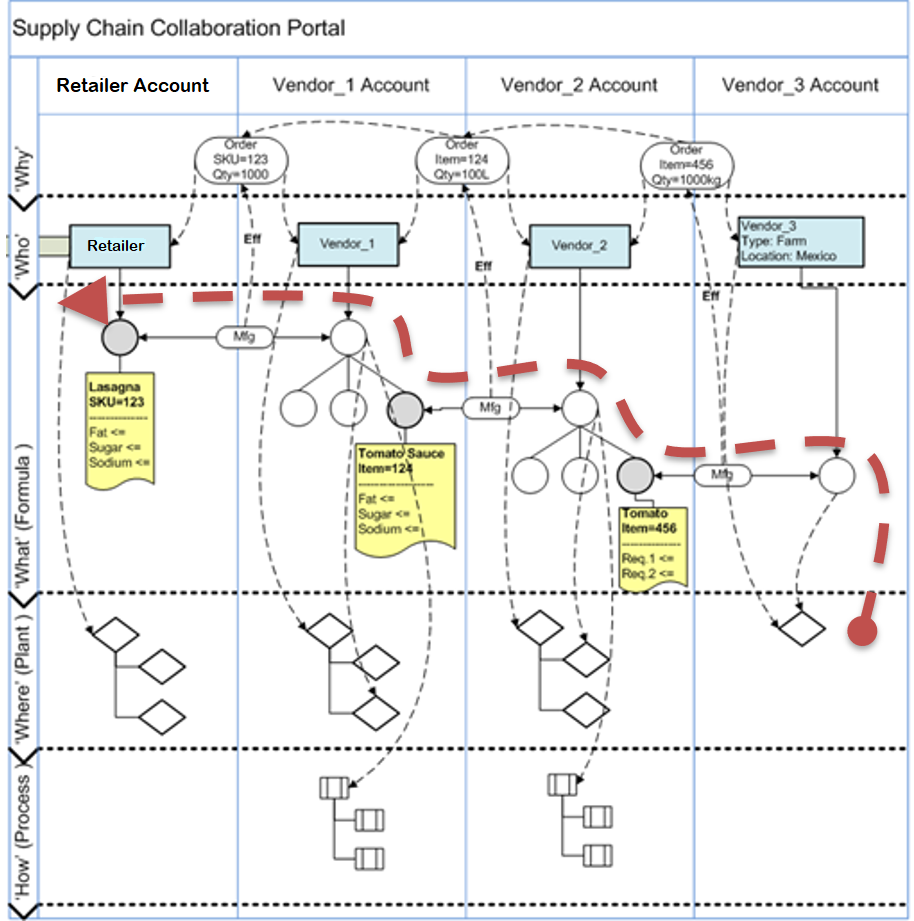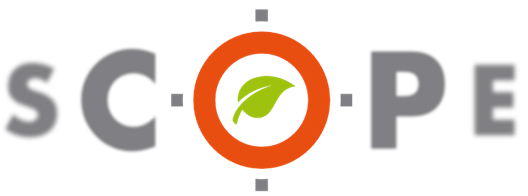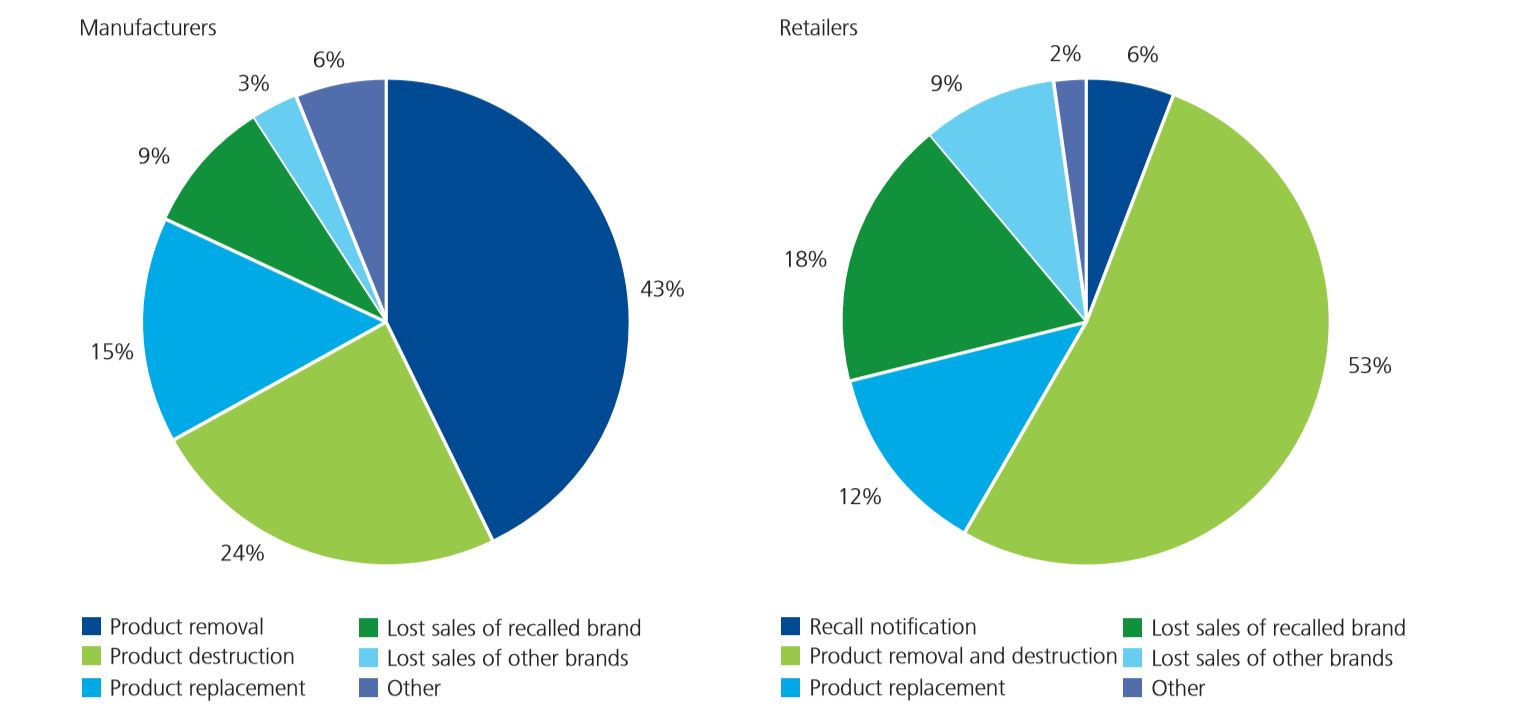The Problem
One of the biggest issues the food supply chain faces in a global economy is food safety, manifested in food recalls. According to fortune.com, in America alone food borne pathogens affect 48 million people each year, with a cost of medical treatment, lost productivity, and illness-related mortality at $55.5 billion.
540 food product were recalled in 2016 in US, up 24% from the 437 recalls in 2015, with causes ranging from bacterial contamination, to mislabelling, to unapproved ingredients.
In 2011, the Grocery Manufacturers Association performed an extensive survey of more than 300 leading food, beverage and consumer product companies, regarding food recalls. Here are its key results:
Because of a lack of traceability in the food supply chain, more than 50% of the food recall costs for both manufacturers and retailers are related to product removal and destruction. A crisis team needs to be assembled to investigate and address the cause of the recall, to inform the affected members of the supply chain and the consumers, along with managing the public image of the company. Indirect costs (loss in sales, litigation, fines and general industry impact) also occur.
One of the biggest food recalls in US history was California bagged spinach in 2006. According to USDA, there were 204 confirmed cases of E.Coli infection (including 104 hospitalizations, 31 with serious complications and 3 deaths) due to eating contaminated spinach grown on a central California farm.
The investigation narrowed down the problem to 1,002 pounds of ready-to-eat spinach harvested in August 14th, 2006 and processed during a single shift in one plant a day later. Lacking proper product traceability and also to be on the safe side, the recall of bagged baby spinach was nationwide. In the aftermath of this recall the fresh bagged salads industry as a whole took an estimated $350 million hit, with the bagged spinach sales declining $201.9 million in the first 68 weeks after announcing the recall.
The Solution = Traceability
Food Safety Magazine published an article on the benefits of traceability in the food supply chain, here is an excerpt:
“Would the market reward firms not implicated in a recall? Could culpable firms limit their losses through increased investments in traceability? According to at least one study, the answers are yes and yes. And the savings may be significant. In a simulation modeled on the contamination of one day’s production at a ground beef processor, where product was assumed to have reached the consumer, and shelf life was set at 14 days, perfect traceability limited the mean projected loss by more than 90% In the same simulation, with shelf life set at 28 days, the mean projected loss was limited by more than 95%.”
What can traceability do for…
Traceability gives an individual firm the ability to differentiate and sell its products after a competitor has delivered unsafe food to the marketplace and issued a recall.
Traceability is essential to the protection of the industry’s collective reputation and market share by isolating the products affected by the problematic sub-product / ingredient.
Traceability helps the consumer identify recalled / contaminated products before eating them. On a macro scale, the public health benefits from implementing traceability in the food supply chain.
SCOPE
Being a multi-tenant collaborative platform, SCOPE helps mitigate the impact of food recalls. Once a food product or ingredient is flagged as problematic, it is quarantined and all the companies that are impacted by using the quarantined product / ingredient are instantly notified.
In SCOPE, the user has the ability to define the food product composition and the sourcing of its ingredients. This powerful feature takes managing the food recall process to new levels, where speed, objectivity and accuracy are some of the industry’s paramount needs. Upstream and downstream food supply chain notifications are performed for all food products affected by the recalled product or ingredient, resulting in possible quarantine of other food and / or retail products.
Food Traceability: Bottom – Up
- Trace Ingredients ‘from farm to fork’
- Intersection to Process, Equipment, Location
- Instant Traceability Reports
- Food Recalls

Food Traceability: Top-Down
- ‘Where are my ingredients coming from?’
- Compliance
- Transparency
- Sustainability




